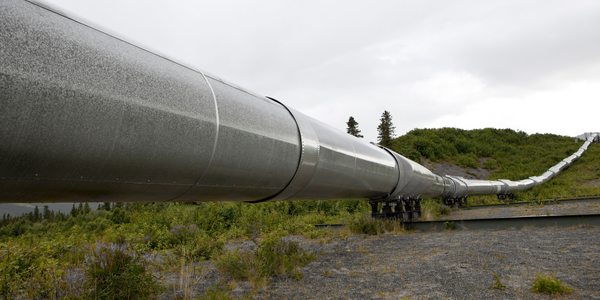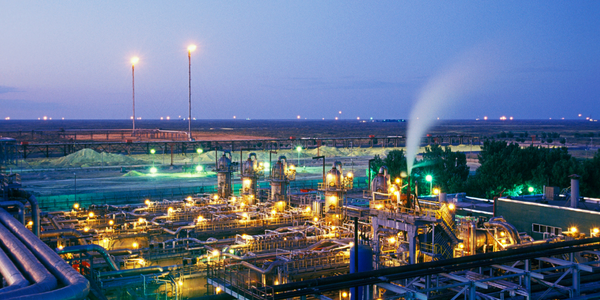Husky Energy Expands GHG Emissions Reporting to Meet Growing Compliance and Sustainability Requirements

公司规模
Large Corporate
地区
- America
国家
- Canada
产品
- Sphera opsInfo™ software
- Sphera Environmental Performance Solution™
技术栈
- Data Management
- Data Reporting
- Data Visualization
实施规模
- Enterprise-wide Deployment
影响指标
- Environmental Impact Reduction
- Digital Expertise
- Brand Awareness
技术
- 平台即服务 (PaaS) - 数据管理平台
适用行业
- 石油和天然气
适用功能
- 商业运营
- 质量保证
用例
- 监管合规监控
服务
- 数据科学服务
- 系统集成
关于客户
Husky Energy Inc. is one of Canada’s largest energy companies, committed to managing business in a socially responsible manner, focused on sustainable development and environmental stewardship. To achieve this strategic goal, Husky’s managers constantly monitor, assess and report on the company’s progress with their Environmental Performance Reporting System (EPRS) – an enterprise-wide information hub built on Sphera opsInfo™ software, part of the Sphera Environmental Performance Solution™. EPRS enables Husky to track and calculate environmental performance in areas such as production energy intensity and carbon intensity index with improved accuracy and increased frequency.
挑战
Husky Energy, one of Canada’s largest energy companies, was faced with the challenge of expanding its greenhouse gas (GHG) emissions reporting to meet growing compliance and sustainability requirements. In 2010, the government of British Columbia issued its Greenhouse Gas Reduction Act Reporting Regulation, which required companies to provide much more granular data. The new rules meant that Husky’s reporting obligations grew from 12 facilities with 14 pieces of equipment to over 136 facilities with 858 pieces of equipment. The company now needed to report on all well-level drilling emissions as well as tracking and reporting emissions down to the equipment level. This presented a significant challenge in terms of data management and reporting.
解决方案
To meet these new challenges, Husky Energy expanded its Environmental Performance Reporting System (EPRS), an enterprise-wide information hub built on Sphera opsInfo™ software, part of the Sphera Environmental Performance Solution™. The EPRS enabled Husky to track and calculate environmental performance in areas such as production energy intensity and carbon intensity index with improved accuracy and increased frequency. Husky changed the way that the data was being both collected and viewed. Much of the data required for GHG reporting had to be gathered from the field and ground-level operations at multiple facilities. Husky launched a business process improvement project to capture that data more efficiently. Operators were made responsible to ensure their data was made available in the systems that interface directly with EPRS. This improved transparency and accountability for audits, and the time savings were dramatic – instead of waiting up to 30 days to receive data from remote locations, the information was already there so it only took a few minutes to generate a report.
运营影响
数量效益

Case Study missing?
Start adding your own!
Register with your work email and create a new case study profile for your business.
相关案例.

Case Study
Taking Oil and Gas Exploration to the Next Level
DownUnder GeoSolutions (DUG) wanted to increase computing performance by 5 to 10 times to improve seismic processing. The solution must build on current architecture software investments without sacrificing existing software and scale computing without scaling IT infrastructure costs.

Case Study
Remote Wellhead Monitoring
Each wellhead was equipped with various sensors and meters that needed to be monitored and controlled from a central HMI, often miles away from the assets in the field. Redundant solar and wind generators were installed at each wellhead to support the electrical needs of the pumpstations, temperature meters, cameras, and cellular modules. In addition to asset management and remote control capabilities, data logging for remote surveillance and alarm notifications was a key demand from the customer. Terra Ferma’s solution needed to be power efficient, reliable, and capable of supporting high-bandwidth data-feeds. They needed a multi-link cellular connection to a central server that sustained reliable and redundant monitoring and control of flow meters, temperature sensors, power supply, and event-logging; including video and image files. This open-standard network needed to interface with the existing SCADA and proprietary network management software.

Case Study
Refinery Saves Over $700,000 with Smart Wireless
One of the largest petroleum refineries in the world is equipped to refine various types of crude oil and manufacture various grades of fuel from motor gasoline to Aviation Turbine Fuel. Due to wear and tear, eight hydrogen valves in each refinery were leaking, and each cost $1800 per ton of hydrogen vented. The plant also had leakage on nearly 30 flare control hydrocarbon valves. The refinery wanted a continuous, online monitoring system that could catch leaks early, minimize hydrogen and hydrocarbon production losses, and improve safety for maintenance.









